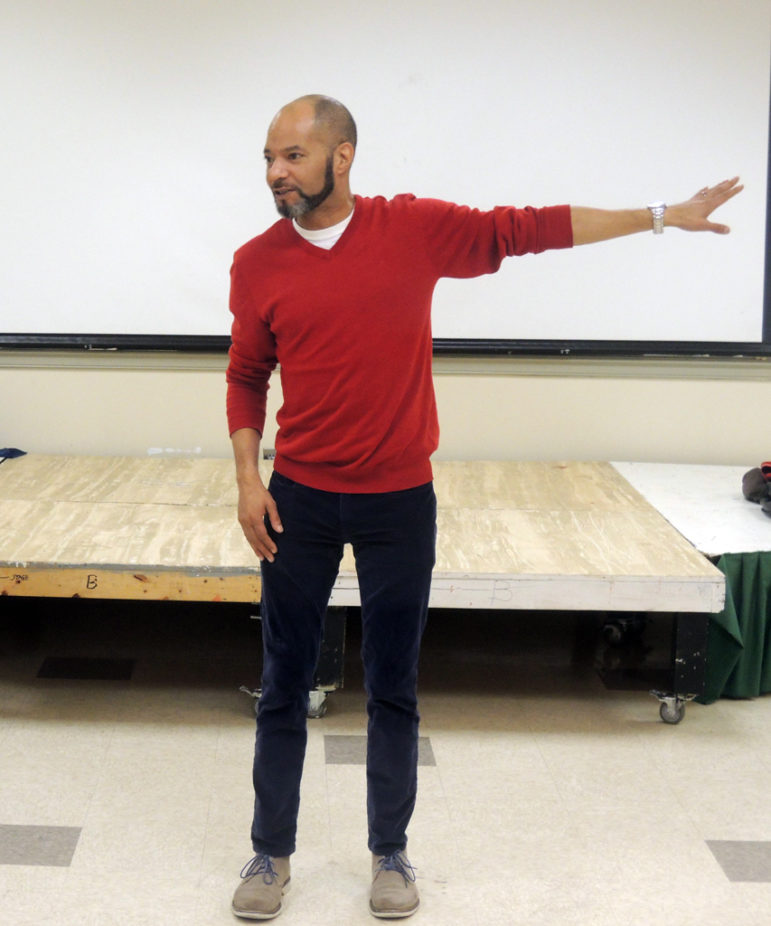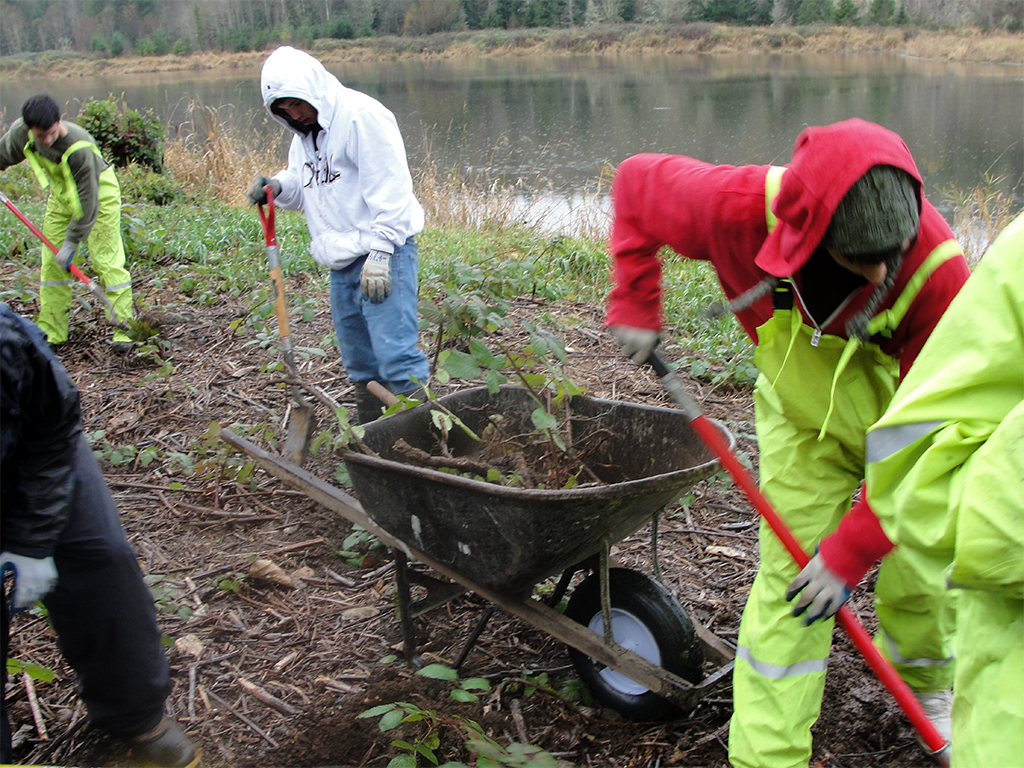A shove on a playground. A pair of shears meant for an art project. Pepper spray carried for a dangerous walk to school and left in a backpack during first period.
While seemingly minor, these infractions, and others like them, have helped fuel a school-to-prison pipeline, with 60,000 youths in U.S. juvenile detention centers on any given day.
Three programs across the country are among those aiming to block that pipeline by preventing arrests for minor crimes, diverting kids who have been sentenced into community programs rather than detention centers and helping youths who have been detained envision a future after incarceration.
“We know that removing students from school, putting them in handcuffs, putting them in the back of a police car, bringing them to a police station, where they can be held there for up to six hours, is a traumatizing, horrifying experience,” said Naomi Goldstein, Ph.D., psychology professor at Drexel University and director of the Juvenile Justice Research and Reform Lab.
“Once kids are arrested, they are usually transferred from their home schools. And once they’re expelled or transferred, the chances that they ever go back and finish school are much lower, which means lower rates of employment,” Goldstein said. “Any mental health issues can be greatly exacerbated. It can create issues with their families gaining access to public housing. It can interfere with them joining the military.”
Diversion in Philadelphia
In 2014, the Philadelphia police department partnered with the Philadelphia school district and the city’s department of human services to immediately divert students with low-level incidents before arrest. Now, if police are called to the school for a minor infraction, students with no prior arrests can immediately avoid arrest by opting to reroute to community-based services. It’s a one-time offer, and it’s been wildly successful.
“We’ve found about 90 percent of the students choose to participate,” Goldstein said. “Citywide, we’ve found that school-based arrests, in year two of the program (the 2015-16 academic year) compared to the year before the program was launched (2013-14) were down 64 percent.” The year before the program launched, 1,582 students were arrested; 569 were arrested the year after.
The number of students receiving “disciplinary transfers” in Philadelphia, which amounts to expulsion because the students are transferred to disciplinary schools, has also dropped substantially.
Outdoor service in Seattle
In the greater Seattle region, youth who have already been sentenced get outdoors in an experiment that combines science and service.
Rachel Stendahl, the regional science coordinator at the Capital Region Educational Service District 113, said she works with two types of kids: Those in detention get quality science education, and youth who are mitigating their sentences with community service become a work crew for environmental conservation projects.
“A big part of it is not just learning about the environmental stewardship aspect, but that green jobs are jobs that these kids can really do, and inspiring them that it’s not just white guys who are biologists who talk to you about salmon, but it’s about people who work in tree farms, or install solar panels,” Stendahl said. “I try to give them a real variety of lectures from people who come from different backgrounds and have different educational abilities, and look more like the population that I serve.”

Theatre Lab Instructor George Grant
Stendahl is trying to target 100 youth by the end of the year, combined, for the in-house education and the outdoors work crew. However, both the newness of the program and the challenges of working with the local prison system and state bureaucracies have created stumbling blocks. The program was launched last year via a grant from the state-run No Child Left Inside.
“The person [at the prison system] I co-wrote the grant with ended up leaving, so I lost the key person who was actually going to help implement the program with me,” Stendahl said. “I kept thinking, oh, I’m coordinating it, I’m doing the work, it shouldn’t be so hard, but a lot of things were harder than I expected.”
But, she said, despite the logistical challenges — including bringing equipment and chemicals into the detention center, and transporting work crew to and from the sites — the effort is worth it.
“I’ve never worked with any group that is more thankful for programming,” Stendahl said. “The kids are on their best behavior; they’re eager to learn and are just grateful that someone is bothering to teach them something new.”
Theater for incarcerated boys in D.C.
That drive to teach something new propels Terah Herman-Saldaña, the program manager at the Theatre Lab School of the Dramatic Arts in her mission of bringing theater training to incarcerated boys in Washington, District of Columbia.
The six- to 10-week program
(depending on the juvenile facility’s schedule) works with young men ages 13 through 21 to develop a script based on one individual’s life or group experiences. An acting coach and a videographer help the group then stage a mini-production of their script, and give them copies afterwards. Participants are chosen based on their length of time served and behavior level.
“One of the big benefits is that the experience for the boys is very validating,” Herman-Saldaña said. “People asking them where they came from, and making them feel like their story matters.”
Whereas the program in Washington state teaches participants about hard skills needed for trail crew, watershed monitoring, green jobs, the program in the District of Columbia teaches its participants soft skills — empathy, anger management, public speaking.
“A lot of them know each other from the streets and in rivaling neighborhoods. For them to be able to empathize and see that they’re not that different from one another is so important,” Herman-Saldaña said. “It also helps them learn to express their emotions. So many of them have a lot of suppressed anger and hurt, and no one has really asked them where that comes from.”
Finding a teacher who is able to work with incarcerated youth, and has the proper training, can be challenging. “It takes a very special person to want to do this work,” Herman-Saldaña said.
To stay free of charge, Theatre Lab uses existing community-based services at no additional taxpayer cost or finds secured grant funding for its initiatives. That’s not always the case in diversion programs for youths.
“Diversion programs may offer good services that keep kids out of the juvenile justice system, but if they have fees attached, and you’re a poor kid who can’t pay those fees, you can’t participate in the program,” said Jessica Feierman, the associate director of the Juvenile Law Center in Philadelphia. “That’s really troubling to us because we are creating a system of justice by income in which some youths are not getting access to those programs just because they don’t have the access to the money to pay.”
The best program is one that doesn’t transfer any costs to its participants, she said. “This should be something we’re committed to as a community and therefore we fund it as we do our other public goods. It just raises too many problems when we try to put the bill on families.”
Hello. We have a small favor to ask. Advertising revenues across the media are falling fast. You can see why we need to ask for your help. Our independent journalism on the juvenile justice system takes a lot of time, money and hard work to produce. But we believe it’s crucial — and we think you agree.
If everyone who reads our reporting helps to pay for it, our future would be much more secure. Every bit helps.
Thanks for listening.

Pingback: How a Youth Justice Program Turned One Teen's Life Around Grants
I am so glad to read about changes in treatment of juvenile justice. This is about time.
Very good information. Lucky me I came across your website by accident (stumbleupon). I’ve saved as a favorite for later!